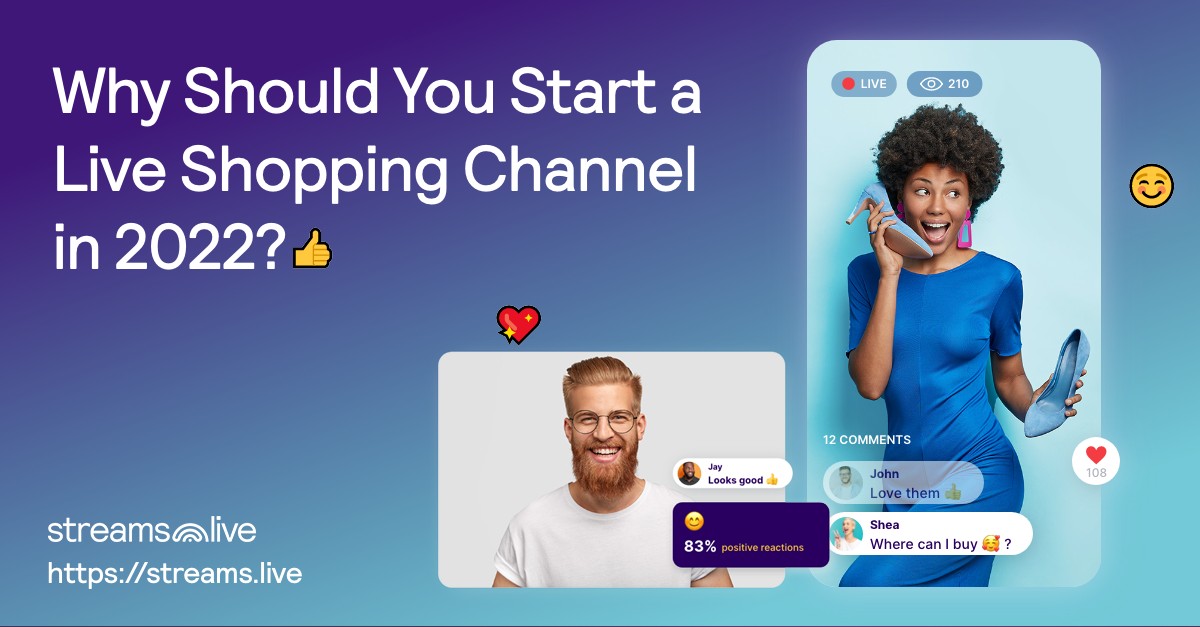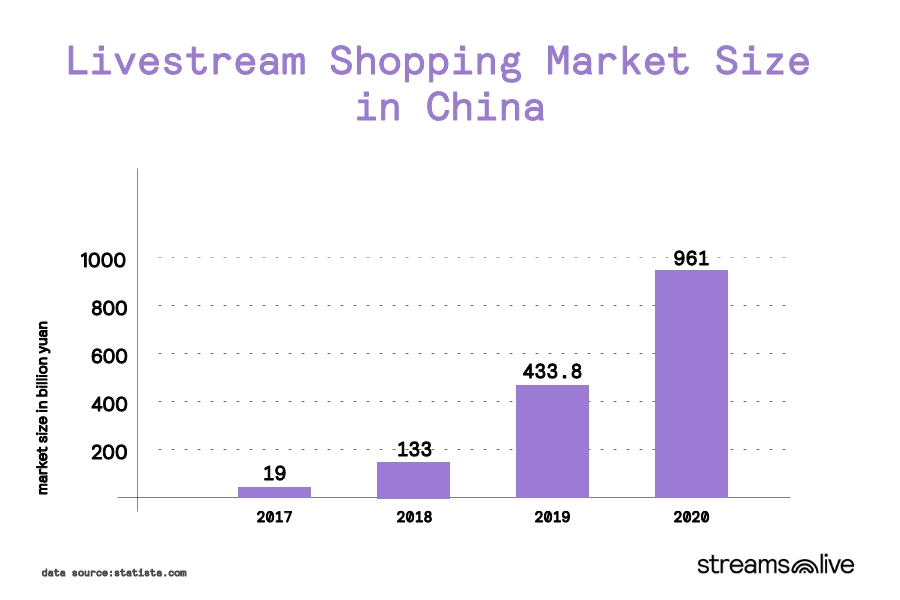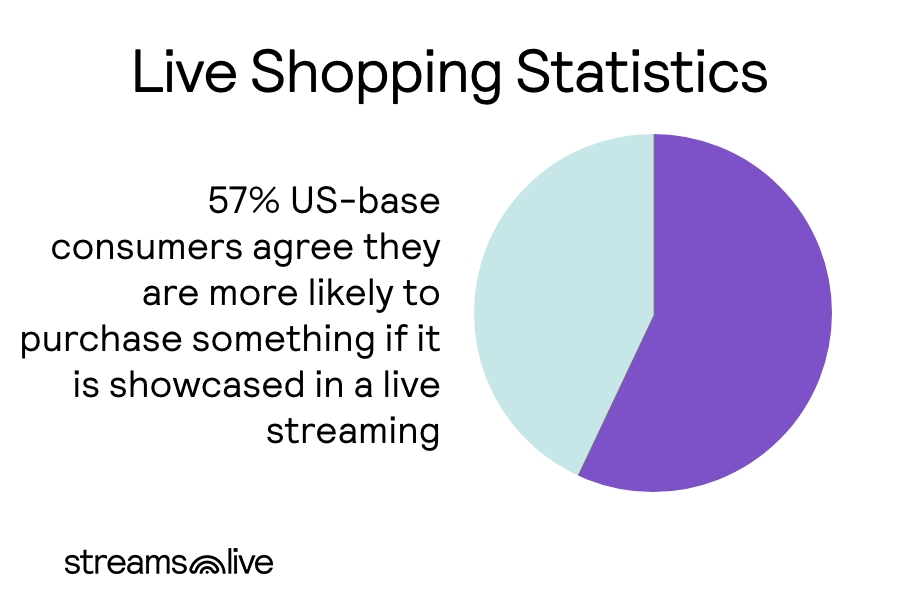
Live shopping is gradually transforming the way businesses engage with their customers online. The see-now-buy-now attitude is swiftly rewriting retail history, and the live shopping experience is firmly embedded in this philosophy. A Live shopping channel is the closest thing to in-person shopping for customers that choose to buy from the comfort of their homes.
Buyers may watch individuals try things in real-time and remark, providing the company with fast feedback. In addition, there is frequently a human aspect, such as a popular influencer or personality acting as a glamorous version of a buyer’s preferred customer service personnel.
Chinese buyers and dealers are already well ahead of the curve. According to a report by McKinsey, if China’s experience is any indication, live e-commerce sales might account for up to 20% of all e-commerce by 2026.
Integrating a Live Shopping Channel into Your Sales Strategy
Live shopping has expanded quickly in China, taking just under five years to emerge into an inventive salesforce with a 10% projected penetration. Between 2017 and 2020, China’s live-commerce business value increased at a compound annual growth rate (CAGR) of more than 280 percent, reaching an estimated $171 billion in 2020. The COVID-19 epidemic has accelerated this rise, and Chinese sales are estimated to reach $423 billion by 2022.

Looking at these numbers, it is easy to predict that the scope of live shopping will only increase in the coming years. Live commerce can primarily assist brands, retailers, and marketplaces in two ways:
To Accelerate Conversion
Live shopping is engaging and absorbing, which keeps people watching for a longer period. It also narrows the client’s decision-making path from awareness to purchase. Time-limited strategies such as one-time discounts might be employed to create a sense of urgency.
There are just too many products available. In addition, your prospective clients are most likely constantly assaulted with new brands, advertisements, and promotional emails. With shorter attention spans and a greater need for personalized content, how can marketers keep their audiences engaged? The growing popularity of live shopping demonstrates, if nothing else, that customers are eager for new experiences.
People are twice as likely as any other sort of material to share videos with their peers. Furthermore, live shopping allows your visitors to interact with you in real-time. These characteristics contribute to increased engagement rates and, as a result, more purchases.
Personalization and Enhanced Brand Appeal
When done correctly, live shopping boosts a brand’s attractiveness and individuality while also attracting extra online visitors. It has the potential to improve current customer relationships while also attracting new ones, particularly young people who are interested in novel shopping forms and experiences. Furthermore, the conversational element of live streaming improves the probability that your audience will remember you. Some businesses are experiencing a 20 percent growth in their proportion of younger viewers.
Benefits of Starting a Live Shopping Channel on Your Website

While live shopping is still a new network with several uncertainties, few best practices are developing, and e-commerce insights are proving useful. Brands will need to make a deliberate effort to understand how to leverage the medium. Today’s buyers have high expectations for the companies they engage with to provide a great customer experience. Here are a few ways you can benefit from integrating the live shopping option on your website.
Direct to Consumer Branding
The retail industry is being upended as distribution patterns shift away from wholesalers and third parties. As part of a new direct B2C strategy that fosters a tighter link between the brand and the customer, a growing number of businesses are now selling directly to consumers. Online platforms helped bring brands and consumers closer. Often known as ‘direct-to-consumer’ (or DTC), it enables a tighter, more direct interaction between each business and its consumers, leading to a more efficient and satisfying customer experience.
Adopting a DTC approach has several advantages. Brands may better differentiate themselves and their goods in the marketplace by implementing a DTC approach into their marketing and sales plan. DTC also enables companies to establish a more direct, one-on-one contact with their customers, resulting in increased loyalty.
Zero-Party Data
Another benefit of starting a live shopping channel is access to a plethora of zero-party data. Zero-party data results from a consumer’s desire for personalization combined with complete discretion over how a firm utilizes its data. When a client freely and proactively shares information with a brand, this is called zero-party data. Purchase preferences, personal context, and how they want to be recognized by the brand are all examples of this.
In this day and age of data breaches and vulnerability, it is more crucial than ever to establish your brand as trustworthy. If there is a clear advantage, 79 percent of customers are keen to provide their data. Furthermore, customers are more ready to cooperate with you than against you if you can explain why you are gathering data and what you intend to do with it.
How to Easily Start a Live Shopping Channel?
Livestream shopping, also known as livestream e-commerce, combines live video content, two-way conversation, and the option for spectators to buy or save highlighted goods straight from the site. Consider it live video meets social networking, with an effective e-commerce feature in place. The advantages of live shopping for retailers include a shorter decision period, better consumer interaction, and higher sales. To start a live channel, you need to consider a few things.
Formatting
A successful live shopping event is built on two critical components: product demonstrations and the possibility for true engagement between the business and the consumers. However, the format is entirely up to you. Popular forms are tutorials, interviews or Q&As, and behind-the-scenes videos demonstrating how a product is designed or manufactured.
Companies generally hire a key opinion leader (KOL) or key opinion consumer (KOC) to host the program, promote the product, and converse with the viewers to generate sales.
Choosing The Product
Consider the stage at which a product is in its process. Do you want to get direct feedback on a particular model, clear out old stock, or offer a seller an uplift? Live events can be quite efficient in raising awareness and prompting trial, but not so much at solidifying loyalty. It’s important to remember that many impulsive consumers are one-time customers, so a freshly attracted audience can’t be taken for granted; maintaining it will need effort. Likewise, experience shows that shoppers frequently arrive from a substantially different population from the brand’s traditional target group.
Marketing
Great advertising, like any other event, boosts performance. Unfortunately, as history has shown, organizations frequently do not devote enough time or money to get their marketing right, which can “perish” even the finest marketing efforts. To optimize views, use an omnichannel strategy, notifying target consumers of an upcoming show via newsletters, emails, blogs, apps, push notifications, and social media and offering links and information via sponsored social media. The finest producers are intimately familiar with the capabilities provided by the selected livestreaming platform, and they take the time to learn which websites their target audience regularly visits and post advertisements there.
Record video on you live shopping channels
Live shopping is great, but it should not make your customers who could not attend the session feel left out. You should always keep their buying options open by recording the sessions and allowing them to purchase the products long after the session has ended. This generates curiosity among the customers, and if you do things right, it makes them eager to join the next live shopping session you hold. Moreover, if someone watching the session is too busy to place an order, they can simply come back and place the order later.
Conclusion
Following China’s footsteps, Western companies, merchants, and marketplaces are launching live shopping projects and events to advertise their products, particularly in the beauty and fashion industries. But live shopping channels are used by brands from different industries.
Meanwhile, customer demand is growing according to a recent poll, about a quarter of consumers outside of China would prefer to learn about new items through a livestream starring an influencer or brand representative.





